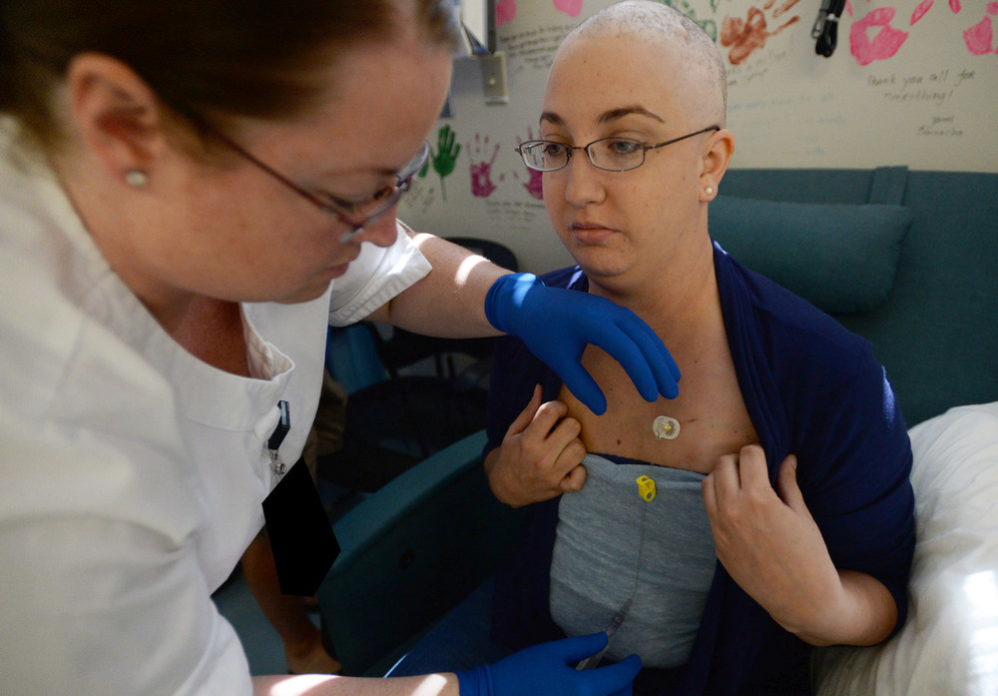Ways To Prevent And Control Breast Cancer In Women
Breast cancer is a type of cancer that can form in the cells of the breasts. It occurs mostly in women and rarely in men. The Symptoms of breast cancer include a lump in the breast, bloody discharge from the nipple and changes in the shape or texture of the nipple or breast.Here are common foods that prevent cancer for cancer patients

Prevention of breast cancer is simply the control of specific breast cancer risk factors as well as effective integrated prevention of non-communicable diseases which promotes healthy diet, physical activity and control of alcohol intake, overweight and obesity, could eventually have an impact in reducing the incidence of breast cancer in the long term. (WHO). The following is a detailed explanation of the top five (5) best ways to prevent breast cancer in woman.
Eat A Healthy Diet:
Cancer is one of the leading causes of death worldwide (pubmed.ng). Advanced studies have shown that a simple lifestyle such as following a healthy diet can change or prevent 30–50% of all cancers. A diet high in whole foods like fruits, vegetables, whole grains, healthy fats and lean protein can or may help to prevent cancer. Although no diet has been proven to cure cancer, but they have been found to have reduced or lowered the risks.
ALSO CHECK: Colon cancer
Control Of Alcohol Intake:
Alcohol consumption even in small quantities has been shown to increase the risk of developing cancer mostly in women. According to the Australian Cancer Council (ACC) men should consume not more than two standard drinks per day, and women not more than one standard drink per day, to reduce the risk of cancer. The relationship between alcohol and cancer is clear; the higher the alcohol consumption, the higher the risk of cancer. This means that a woman increases her risk of breast cancer by 50% when drinking 4 glasses of wines per day and by 130% when drinking 8 glasses per day. (WHO). Even small amounts of alcohol increase the risk of cancer.
Maintain a healthy weight:
One of the most important things you can do to prevent the risk of cancer is to maintain a healthy weight. According to Basen-Engquist, There are steps you can take to prevent overweight and obesity and one of them is to stay active. Aim for 150 minutes of moderate activity or 75 minutes of vigorous activity a week because being obese or overweight hurts your body’s ability to work well. Maintaining a healthy weight is essential for reducing the risks of breast cancer.
Be physically active
Generally, physical activities can help to maintain a healthy weight, which will in return help to prevent breast cancer. A healthy adults should aim for at least 150 minutes a week of moderate aerobic activity or 75 minutes of vigorous aerobic activity weekly, plus strength training at least twice a week.
Breast feeding:
Research have shown that mothers who breastfeed have lower risks of pre- and post-menopausal breast cancer. Breastfeeding much longer than the recommended six months can provide additional protection against breast cancer for women. Lindsey Wohlford, wellness dietitian, in an article published by MD Anderson Centre, The University of Texas. Women who breastfeed usually experience hormonal changes during lactation that can or may delay their menstrual periods. These changes can reduce a woman’s lifetime exposure to hormones like estrogen that can promote breast cancer cell growth in women.
Breast Cancer Control
Early Detection
The risks of cancer can be reduced with prevention but cannot eliminate the majority of breast cancers that develop in women living in low and middle income countries especially in Africa. According to Anderson et al., 2008, early detection in order to improve breast cancer outcome and survival remains the cornerstone of breast cancer control. This means that early detection is the key to surviving breast cancer.
There are two methods of early detection of breast cancer they include
Early Diagnosis
Early diagnosis is a very important early detection strategy or method, especially in low and middle income countries where the diseases is usually diagnosed in late stages and resources are very limited. This strategy or method can reduce the risks of the disease to stages that are more amenable to curative treatment (Yip et al., 2008).
Mammography screening
Mammography screening method has proven to be effective. An organized population based mammography screening programmes can reduce breast cancer mortality by around 20% in the screened group versus the unscreened group across all age groups, there seems to be a narrow balance of benefits compared with harms, particularly in younger and older women. This screening is very difficult and resource intensive and no research of its effectiveness has been conducted in low resource settings.
Breast Self-Examination (BSE)
The practice of Breast Self-Examination has been seen to have empowered women and help them in taking responsibility for their own health. This control method is recommend for raising awareness among women at risk rather than as a screening method.
Clinical Breast Examination (CBE)
Research have found Clinical Breast Examination as a low cost approach to breast cancer screening that can work in low and medium income countries. Results have also shown that the age standardized incidence rate for advanced stage breast cancer is lower in the screened group compared to the unscreened group (Sankaranarayanan, 2011).




